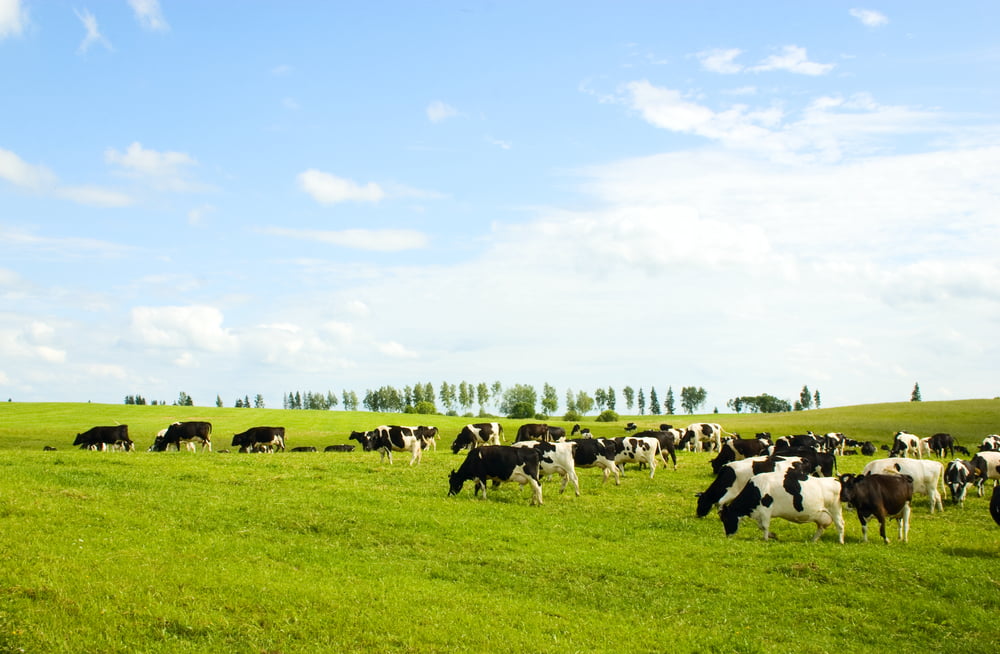Email or call us 01621 773883
Email or call us 01621 773883
Posted on April 20, 2022 and written by Dengie

As Spring approaches and the weather improves, cattle are either outside grazing or very close to being turned out onto fresh, fast-growing grass. Spring grass is high protein, high energy, high oil – on some days high moisture – and considered a cheap source of feed for dairy cows after the winter housing period.
However, Spring turnout is also a disruptive time for the rumen of a dairy cow, and this can affect feed conversion efficiency, milk and butterfat production, plus other fertility and health issues in cattle.
SARA, or Sub-Acute Ruminal Acidosis, is seen when the rumen pH level drops below its optimum range of 5.8-6.2 for 3 hours, or more. The consequence of this is that the microbes in the rumen will be less effective at digesting fibre.
When we have good quality grazing swards, the ratio of leaf to stem is high. This has two consequences – fibre levels are relatively low and sugar levels, especially on warm, sunny days is high, perhaps more than 12%. SARA will occur when the rumen microbes ferment the sugars rapidly. Large volumes of volatile fatty acids are produced in a short space of time, driving down the pH of the rumen.
The effects of SARA can be further exacerbated by the inclusion of rapidly degradable starch in the cows concentrate feed.
There are a number of ways to identify the presence of SARA in dairy cows. When we look around the field, 60-70% of the cattle should be lying down cudding. A well-functioning rumen should still be able to produce a firm-ish pat when defecating. Loose dung, especially bubbly dung, could indicate issues with SARA. Finally, butterfat levels and milk quality in general. If butterfat falls 0.3 percentage points in one week then, again, this could be an indication that SARA is an issue.
As mentioned earlier, there are volatile fatty acids in the rumen, and it is their rapid production that can cause acidosis. However, these volatile fatty acids have a function. When fibre is broken down in the rumen the consequence is the production of the volatile fatty acid called acetate. Butterfat is derived from acetate. Therefore, when fibre is low the rumen produces less acetate, and because fibre is low this means the proportion of starch and proteins are high producing other volatile fatty acids – often in excess – leading to SARA and the reduced ability to digest fibre. It is a vicious circle, but there are answers.
To help correct the drop in pH, and associated problems, we need to provide a buffer in the form of saliva. Dairy cows can generate more buffer naturally by chewing and ruminating for longer periods of time. To encourage further rumination, a long fibre such as lucerne can be added to the dairy cow’s ration. Feeding lucerne to cows encourages them to chew, and it is this activity of increased chewing time per kg of DM that produces large amounts of saliva and, therefore, bicarbonate. Settling the rumen will mean the cow will be more efficient at converting grass into milk and should also consume more – leading to up to 2.5 litres more milk/cow/day.
Rumiplus is a precision-dried feed for cows that is chopped lucerne fibre and pelleted lucerne. The high quality structure of lucerne fibre helps to increase rumination and therefore generate more saliva for dairy cows.
If you would like further advice on feeding lucerne to cows or would like to speak to us about our products, click here to contact us or call us on 07802 829525.